AKO (ASSOCIATION OF KASHRUS ORGANIZATIONS) CONFERENCE
DECEMBER 31, 2019- JANUARY 2, 2020
By: Linda Levin
Among the 613 mitzvos in the Torah, Shemiras Shabbos, Taharas Hamishpacha and Kashrus stand out as defining what it means to be a Torah-observant Jew.
Almost 50 years ago, I remember being told never to eat a candy bar without first checking the ingredient list. If the list did not include lard or animal fat but said “vegetable oil” that was enough to allow its consumption. There were few if any reliable kashrus symbols on the package.
Back then, keeping kosher was simple….. or so we thought. There were just a few “rules”: no meat and milk together, checking an ingredients list printed on a package, a frum person or your Rabbi said the item was permissible to eat. Kashrus supervision was in its infancy with many misconceptions. Kashrus agencies were yet to become the sophisticated operations we have today.
Baruch Hashem, our communities grew; yeshivos and Bais Yaakovs flourished. Kolelim with advanced learning opportunities sprouted in every corner of the globe. More and more people became educated and knowledgeable in halacha and they began demanding more stringencies and more transparency in food production. Over time, it became no longer acceptable to eat anything without a reliable hechsher; no one would think of eating out in a restaurant without a proper Hechsher.
Many began to demand ever higher levels of kashrus including certification of yoshon, pas Yisroel, and chalav Yisroel. Today, mashgichim must be highly trained. Courses, both live and online, are available for those wishing to enter the Hashgacha field.
As issues in kashrus proliferated, the kosher consumer sought reliable solutions. While there used to be one or two main supervisory agencies, local agencies began to proliferate. Newly established agencies were not limited to the New York area. Out -of -town communities and communities overseas needed their own local supervision. As of 2019, there were 1,400 registered kashrus certification agencies worldwide!!
The Association of Kashrus Organizations (AKO) was established in 1985 to unite the different kashrus agencies around the globe under one umbrella with the goal of raising and maintaining the highest level of kashrus possible. Leading authorities in the world today have a venue where they can discuss the numerous situations that arise in the kashrus industry, to create a plan for emergency kashrus situations, to construct basic guidelines for mutually acceptable standards and to present a unified voice in kashrus.
This year’s AKO conference coincided with the Siyum Hashas. The conference, which covered a wide variety of kashrus issues and workplace issues, spanned three days. It was hosted and coordinated by one of the premier kashrus agencies in America today,-the KOF-K. The KOF-K was founded by Rabbi Zecharia Senter about 40 years ago. He works together with his sons, Rabbis Daniel and Ari Senter and a devoted staff of Kashrus professionals.
At the conference, the KOF-K paid special tribute to their esteemed Av Beis Din, Rabbi Shlomo Gissinger, zt”l whose petira this past Elul dealt a heavy blow not only to the KOF-K but to all of Klal Yisroel. A special Siyum Hashas by the kashrus agencies was held on the first day of the conference l’zecher haRav Gissinger, followed by a video presentation. The conference also honored two other pillars of kashrus who passed away during the previous year: Rabbi Binyomin Shandalov of Chicago, the founder of AKO, and Rabbi Yaakov Lipshutz, founder of the NK (National Kashrus).
The conference was graced by the presence of the world-renowned posek, Rav Shlomo Miller shlita, Rosh Kollel Avreichim of Toronto. He answered questions that were submitted to “Ask the Posek “ session, moderated by Rabbi Yaakov Felder of the COR. He was joined on the panel by Rabbi Baruch Hirschfeld of Cleveland Kosher. The KOF-K’s notable dayanim, Rabbi Moshe Chaim Kahan and Rabbi Shmuel Meir Katz , Rabbi Menachem Genack of the OU, Rabbi Don Yoel Levy of the OK, Rabbi Moshe Heinemann of the Star-K and Rabbi Sholom Fishbane of the Chicago Rabbinical Council all spoke,.
As you read this you are probably wondering: What can you discuss in the world of kashrus that could fill up three days? A cursory glance at the program reveals a wide range of contemporary issues some of which may be surprising to the layman but are vital to mashgichim and dayanim. Interesting topics such as Shechitah in the Era of Animal Rights, Marijuana Certification, Kashrus and Shabbos applications in nonlife- threatening medical conditions and Cultured Meat were on the agenda.
A segment of the conference was devoted to discussing non-kashrus issues that pertain to working with non-Jews and maintaining good relationships in the workplace. Since mashgichim are generally male, the program also included a session on sensitivity training when working with female employees.
The conference brought together numerous well-known Kashrus agencies as well as lesser known out-of-town and overseas agencies. Joining the KOF-K at the conference were rabbinical coordinators from the OU, OK, Star-K (Baltimore), cRc (Chicago), COR (Toronto), MK (Montreal), Oregon Kosher, BVK (Buffalo), Kosher Australia, Va’ad of the Five Towns, Dallas-K, HKA (Houston) and many more.
As Rabbi Moshe Reich, Kashrus Administrator of KOF-K and AKO Conference 2020 coordinator, stated in his closing remarks, “It is truly a Zechus to be part of the KOF-K family and to be given the opportunity to arrange and set up the conference. It was a great Kovid Shmayim and Nachas Ruach to H’KBH. It was amazing how 60+ agencies and 130+ Kashrus professionals got together with one goal. To strengthen Kashrus on behalf of the Klal.”
It is impossible for an article such as this to highlight all of the amazing discussions and lectures. Following is a short overview of some very new and interesting developments in the world of kashrus and halacha.
TECHNOLOGY USE IN KASHRUS
As we live at a time where technology is advancing at break-neck speed, it was not surprising that the conference touched on how to harness technology in the service of improving kashrus.
One fascinating new idea that was presented involved using Artificial Intelligence to ensure the kashrus of food service facilities, hotels, and caterers. Facial recognition cameras can be installed to see who is taking challah, who is turning on the ovens, and /or who is entering the facilities. These cameras can track ingredient deliveries. The camera would send an immediate alert to the mashgiach if it sensed anything amiss. A truly futuristic approach to hashgacha!
Mr. Shmuel Desser of KosherPassport.com demonstrated a new security seal that could be used on packaged items. The security seal has what is called a QR (quick response) code which can be scanned using any Smart Phone. The scan reveals everything about the product-where it was produced, its weight, production date and lot number etc. “Kosher Passport” is fraud-proof. It ensures that the product you have purchased, or are about to purchase, is reliably kosher.
CONTEMPORARY SHAILOS
Marijuana is now decriminalized and is legal for recreational use as well as for medicinal use in many states. The question arises about its acceptability in halacha. Marijuana use has to be looked at from a few different angles: is it being smoked? Ingested? What about the psychedelic effect? What is permitted under Jewish Law? We know that alcohol, which can be addictive and even dangerous, is permitted by the Torah. Rabbi Yonah Reiss of the cRc gave an overview of the shailos and teshuvos involved in certifying marijuana and its edible products as kosher. He quoted Rav Elyashiv zt”l as paskening that medicinal marijuana under medical supervision, is permitted.
Halachic issues regarding security were discussed. The topic of bringing guns into a shul is unfortunately a very current shaila. The majority psak is that we should not bring guns into shul but it is ok to have an armed guard stationed outside. It goes without saying that this area of halacha is fluid and subject to change if there is a present and clear danger (chas v’shalom) .
CULTURED MEAT
Before we take a look at the halachik aspects of this new “meat”, some background information is necessary. Cultured meat refers to the concept of meat (which includes muscle cells, fat cells, connective tissue, blood, and other components) produced via cell culture, rather than from a whole slaughtered animal. Cultured Beef is created by painlessly harvesting muscle cells or using stem cells from ova (eggs) of a living cow. Scientists then feed and nurture the cells in serum so they multiply to create muscle tissue, which is the main component of the meat we eat. It is biologically exactly the same as the meat tissue that comes from a cow.
Now for the halachik ramifications: Would cultured meat be considered aiver min hachai if stem cells are taken from a live animal? Is it really kosher under all circumstances or must the cells come from a kosher animal? Is it to be classified parve or fleishig? Rav Asher Weiss shlita holds that it is fleishig while others disagree.
RARE ANIMALS, BIRDS, GRASSHOPPERS AND FISH
Have you ever heard of a Munjac deer? How about a Peking or Muscovy duck? Ring-necked pheasant? Would you eat grasshoppers? Rabbi Shaul Shimon Deutsch of the Living Torah Museum used life-sized preserved specimens as he spoke about the kosher status of these rare species and the complexity in paskening on their kosher status.
Rabbi Deutsch explained that although deer are a kosher species, the Munjac deer present a shaila because of its canine teeth. Birds have to have a mesora in order to be acceptable. (that is why some people do not eat turkey). Interestingly, the Muscovy duck was discovered to have a predatory nature. Since we are not allowed to eat predators, most poskim prohibited it. Fish must have real scales that come off easily. A fish known as the Kingslip is not considered kosher in North America but the Beis Din in South Africa paskened that it is kosher. Some Sephardim have a mesora to eat certain grasshoppers. However, the general consensus today is to refrain from eating them.
So bottom line is this: Before trying new and exotic foods: Kosher Consumer beware!
ANIMAL RIGHTS AND SHECHITAH
Animal rights activists are now trying to interfere in shechita, especially with the handling of animals in the slaughter houses in the U.S., and in other places across the globe. Rabbi Gutnick of Kosher Australia enjoined the participants to reject heterim and compromises (such as stunning the animals) saying that this could open doors to new challenges in the future. He feels that animal rights activism should not be ignored but we should be careful not to reveal too much information that can later be (mis)used against us.
By all accounts, the conference was a huge success. The participants returned to their own communities armed with the latest information in the world of kashrus.
As one 40 + year veteran kashrus expert stated, “This was the finest and most innovative conference I have ever attended. The level of expertise, the scope of presentations and discussion and the presence of so many world-class kashrus experts was just over-the top!”
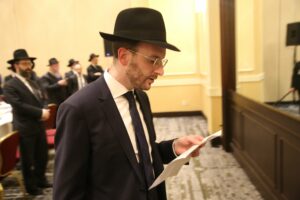
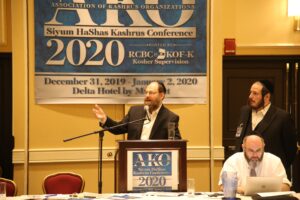
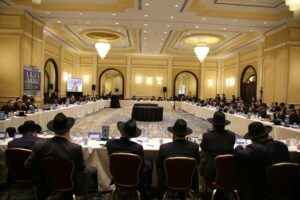


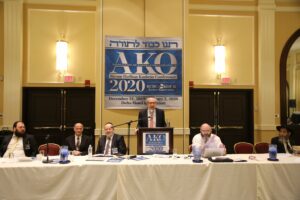
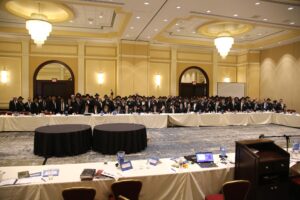
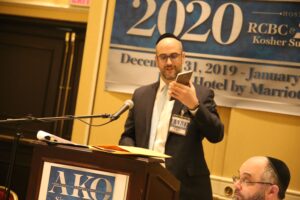
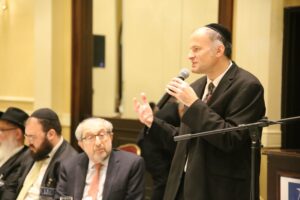
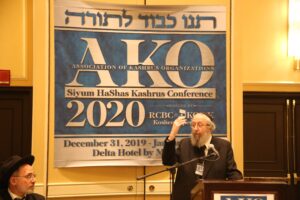
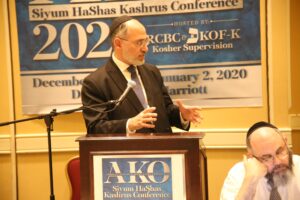
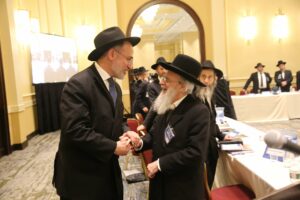
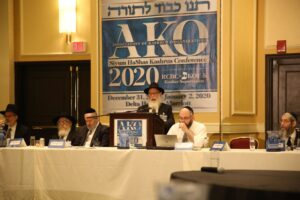
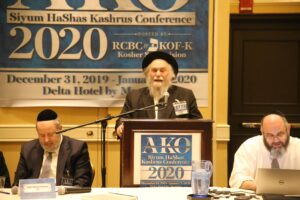
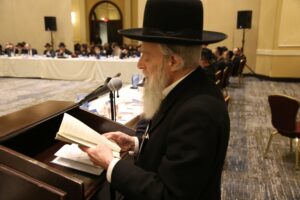
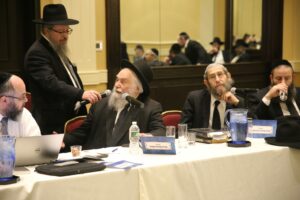
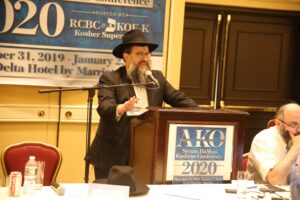
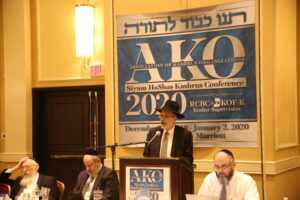

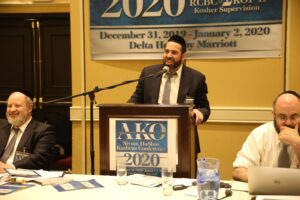
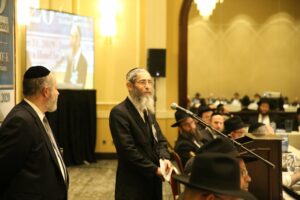
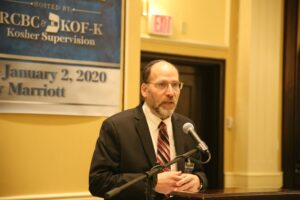
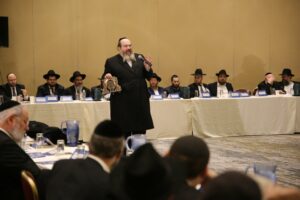
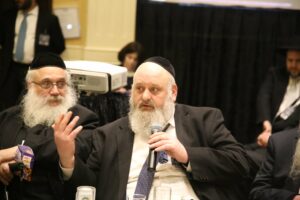
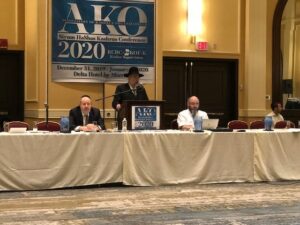
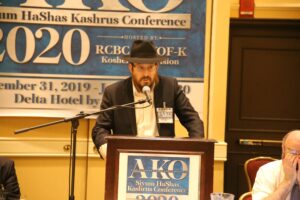
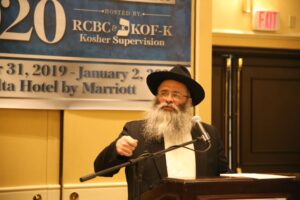
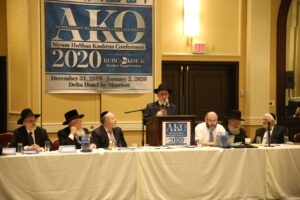
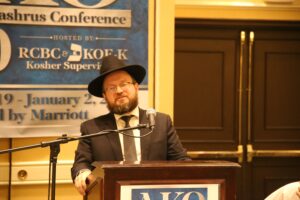
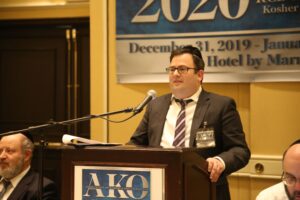
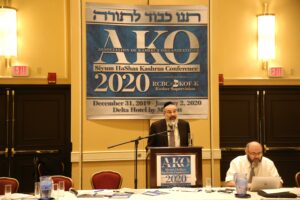
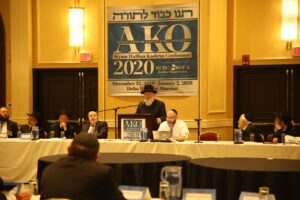
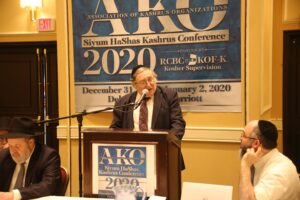
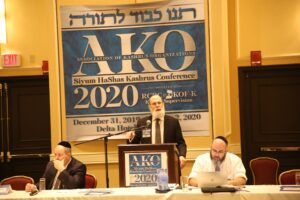
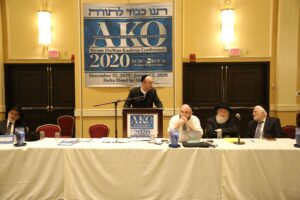
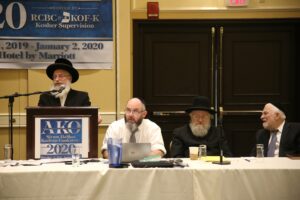
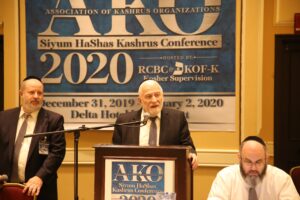
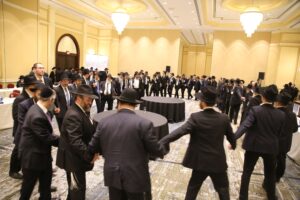

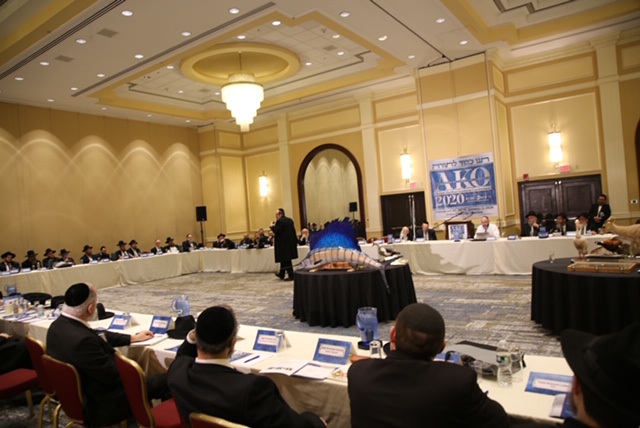


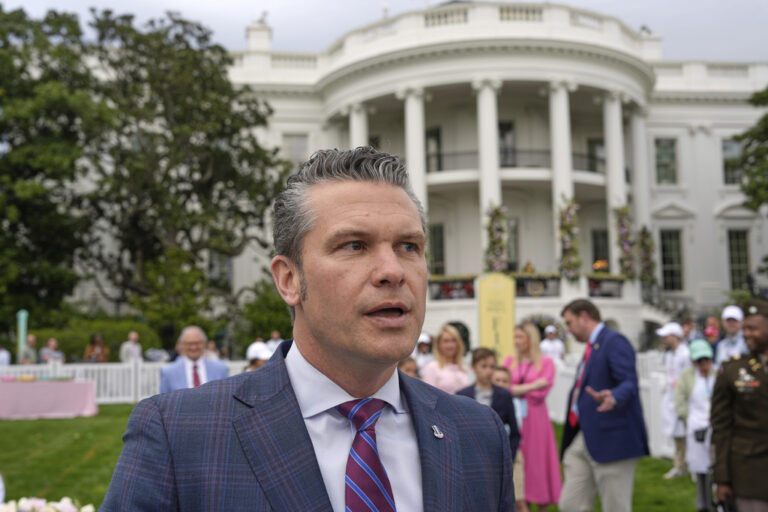

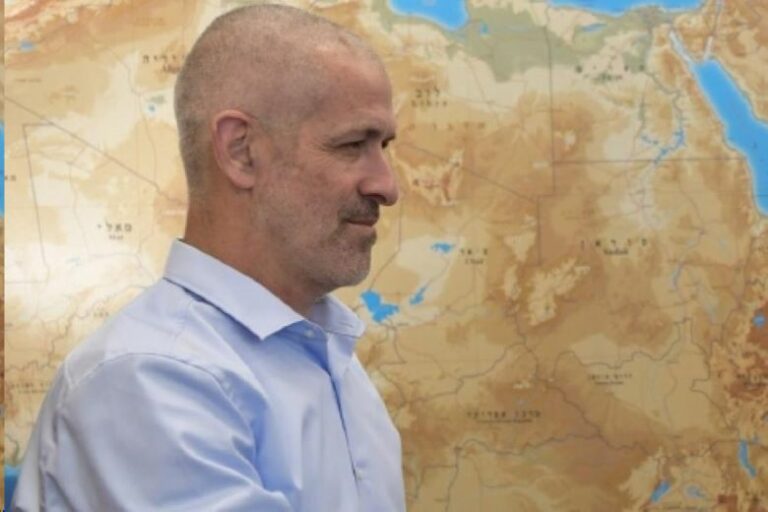



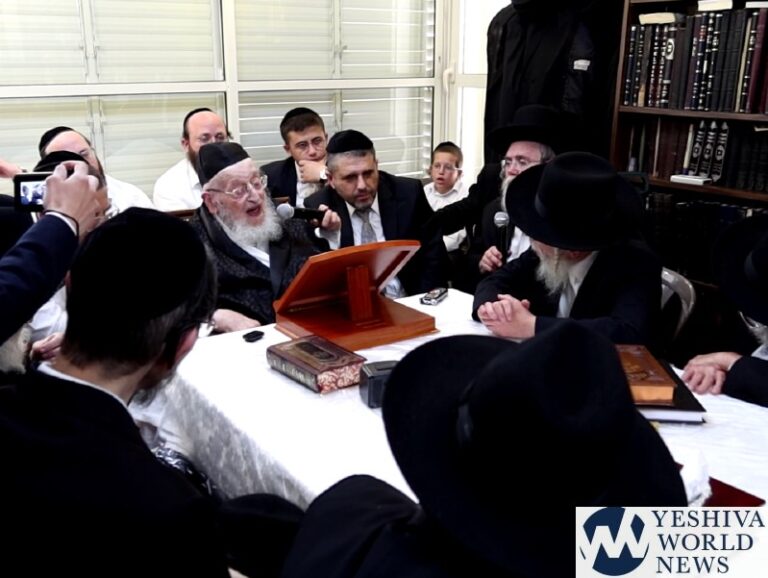

2 Responses
Breathless writing.
Will the follow-up tell where this conference was held?
What country?
What city?
Cultured meat is clearly kosher and parev, for a simple reason that must have escaped those who hold otherwise. By the time any such product comes to market, it will not be the first generation cells that were harvested from an animal, but multiple generations later. And the halacha is that after four generations there is nothing left of the original culture.
Since we are not allowed to eat predators, most poskim prohibited it.
Since when are we not allowed to eat predators? Where does it say such a thing? “Doress” does not mean “predator”. This is just as much an amhoratzus as the claim that we are not allowed to eat bottom-feeding fish. Indeed pretty much all fish are predators, and yet the vast majority of fish are kosher. And of course some the most well-known and popular kosher fish are bottom-feeders.
Upper canine teeth in deer present a puzzling question, but the bottom line has to be that the Torah gives us the simanei kashrus for land animals and we have no right to alter them just because we came across a gemara with odd implications. Even whitetail deer occasionally have upper canines; very rarely, but if you search the web for it you will find many reports of it. This cannot mean that we will suddenly asser them!